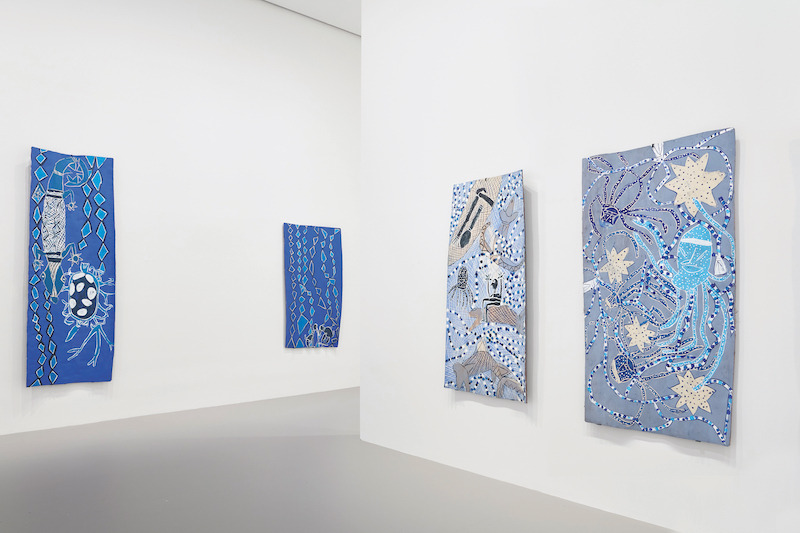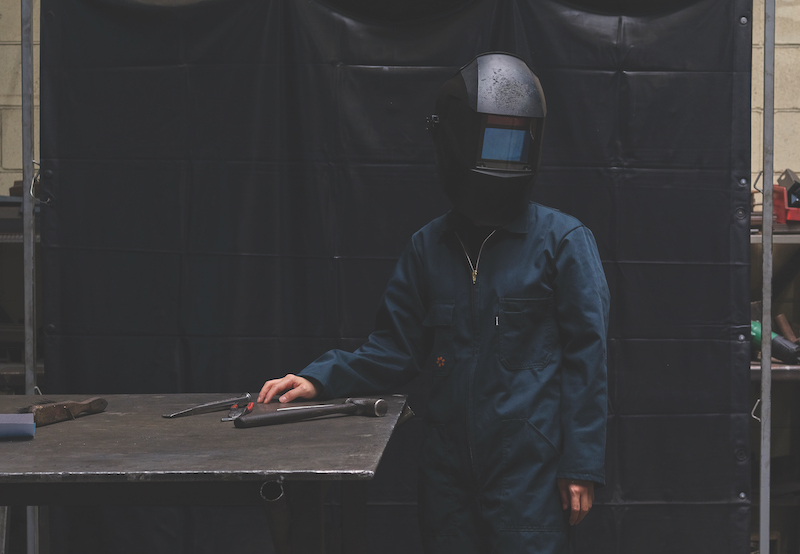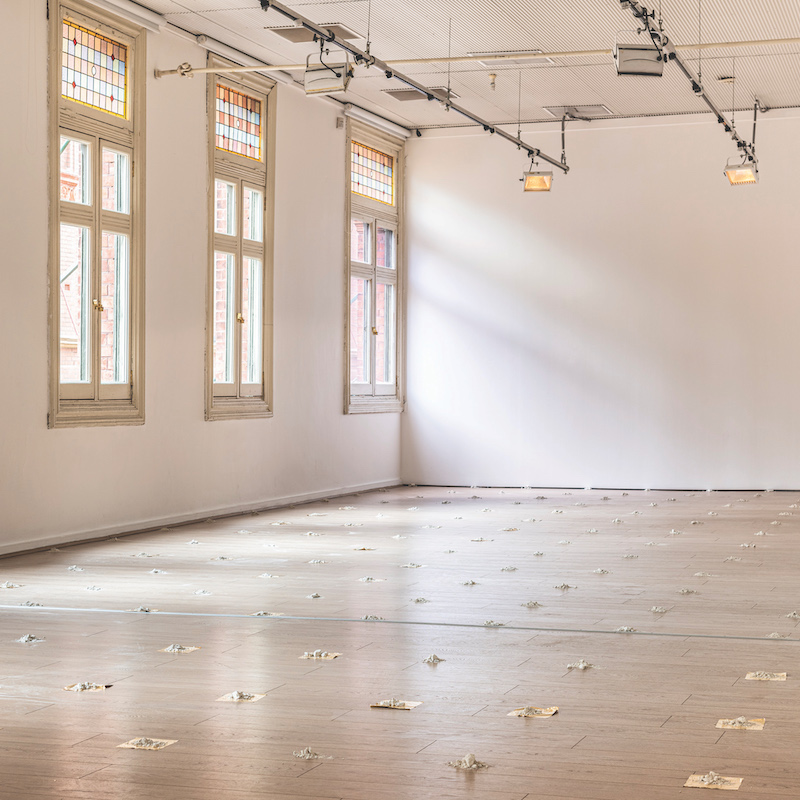Cool Hunter Predictions: Dhambit Mununggurr
The artists to watch in the year ahead.
Words: Claire G. Coleman
Photography: Tom Ross
In colloquial English, “blue” is most often associated with sadness. We feel blue, we listen to the blues – a genre almost universally considered morose. But under the brush of Dhambit Mununggurr, blue is ecstatic and expansive; the blue in Mununggurr’s painting is undoubtedly a happy hue.
In 2007 Mununggurr was seriously injured when she was hit by a car, which left her paralysed on her right side and in a wheelchair. No longer able to grind the ochres required to create her bark paintings, she relearned to paint with acrylics and using her left hand – her community relaxing the usual rules around only using materials found on Country. Mununggurr’s works today are uniquely expressive, predominately figurative, recognisably Yolŋu and extraordinarily, breathtakingly blue.
As often happens with artists limited by forces outside of their control, Mununggurr has turned her limitation into an asset. By working through her injuries she has found new and exciting expressions. “Because she is using her non-preferred hand and struggling with various motor control issues, she must launch each stroke like a spear,” says Will Stubbs, co-ordinator at Buku-Larrnggay Mulka Art Centre where Mununggurr paints. “This gives a dynamic energy to the work.”
At the end of the opening talk at her exhibition at Salon Art Projects in Darwin in 2019, Mununggurr threw her hands in the air, proclaiming, “Can we all have a happy life!?”. Stubbs called it a rallying cry. Mununggurr wants us all to be happy, wants us all to ignore the little things that stand between us and happiness, and that is a lesson we should all take in.
This wisdom from Mununggurr became the title of her solo presentation at the prestigious NGV Triennial, staged at the National Gallery of Victoria until April 2021. With a show at Sydney’s Roslyn Oxley9 Gallery slated later in the year, it’s fair to say Mununggurr’s spear has landed firmly in the center of contemporary Australian art today.
This article was originally published in Art Collector issue 95, JAN – MAR 2021.









